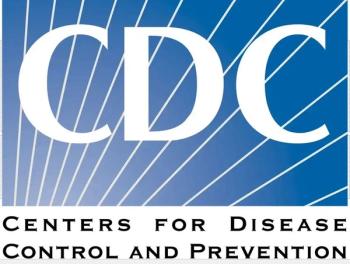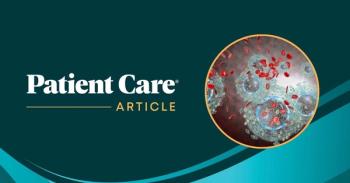
Septic Pulmonary Emboli
A51-year-old man who was an active injection drug user was admitted to the ICU with septic shock and severe respiratory distress. Notable findings were fever, multiple opacities on a chest radiograph, and an elevated white blood cell count.
A 51-year-old man who was an active injection drug user was admitted to the ICU with septic shock and severe respiratory distress. Notable findings were fever, multiple opacities on a chest radiograph, and an elevated white blood cell count.
A CT scan of the chest showed subpleural cavitating lung nodules (
Septic pulmonary embolism is an uncommon disorder that generally presents with an insidious onset; characteristic features include fever and lung infiltrates associated with an active focus of extrapulmonary infection.1,2 Risk factors are injection drug use, indwelling catheters/ devices, pelvic thrombophlebitis, and suppurative processes in the head and neck.3,4 The embolic blood clot that leads to an infarction and the microorganisms contained in the clot incite a focal abscess.4
The triad of bacteremia, fever, and multiple cavitary pulmonary infiltrates on a chest radiograph should always prompt a search for right-sided infective endocarditis.2,3
References:
REFERENCES:
1.
Twickler DM, Setiawan AT, Evans RS, et al. Imaging of puerperal septic thrombophlebitis: prospective comparison of MR imaging, CT, and sonography.
AJR
. 1997;169:1039-1043.
2.
Cook RJ, Ashton RW, Aughenbaugh GL, Ryu JH. Septic pulmonary embolism: presenting features and clinical course of 14 patients.
Chest
. 2005;128: 162-166.
3.
Parambil JG, Savci CD, Tazelaar HD, Ryu JH. Causes and presenting features of pulmonary infarctions in 43 cases identified by surgical lung biopsy.
Chest
. 2005;127:1178-1183.
4.
Lee SJ, Cha SI, Kim CH, et al. Septic pulmonary embolism in Korea: microbiology, clinicoradiologic features, and treatment outcome.
J Infect
. 2007;54: 230-234.
Newsletter
Enhance your clinical practice with the Patient Care newsletter, offering the latest evidence-based guidelines, diagnostic insights, and treatment strategies for primary care physicians.



























































































































































































































































































